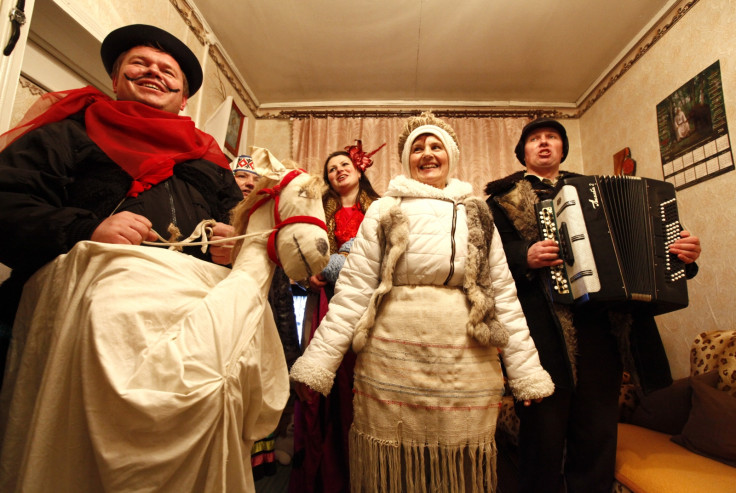Orthodox New Year 2016: How Christians celebrate the 'Old New Year'

Orthodox Christians in Russia, Ukraine, Greece and other countries worldwide are gearing up to celebrate Orthodox New Year on 14 January.
The date is taken from the old Julian calendar, which was introduced by Julius Caesar in 46 BC as a reform of the Roman calendar. This was replaced by the Gregorian calendar in the majority of western Europe.
Although the Russian Soviet Federative Socialist Republic officially adopted the Gregorian calendar in 1918, the Russian Orthodox Church continued to use the Julian calendar. The New Year by the Julian calendar is still informally observed, with some people choosing to celebrate both the New Year on 1 January and the "Old" New Year on 14 January.
Orthodox communities in Belarus, Serbia, Macedonia, Switzerland and other countries celebrate Old New Year on 14 January – with some traditions beginning in the evening of 13 January. The Berbers of North Africa, including Morocco and Libya, traditionally celebrate the New Year according to the Berber calendar – which is close to the Julian calendar.
Macedonians gather outside their houses to drink, eat and sing traditional songs. For those staying in on the New Year, it is traditional to eat pita bread with a coin inside – whoever finds the coin is said to have good luck for the coming year. In Serbia, fireworks are set off and clubs, cafes and hotels host events with both modern and traditional celebrations.
The tradition of the Old New Year has continued in areas of Belarus, Bosnia and Herzegovina, Georgia, Uzbekistan, Azerbaijan, Montenegro, Moldova, Ukraine and even Scotland, where it was traditionally held on 12 January. In Wales, some mark the day as Hen Galan, when children may sing traditional songs in Welsh. In Switzerland, it is known as alter Silvester.
© Copyright IBTimes 2025. All rights reserved.





















